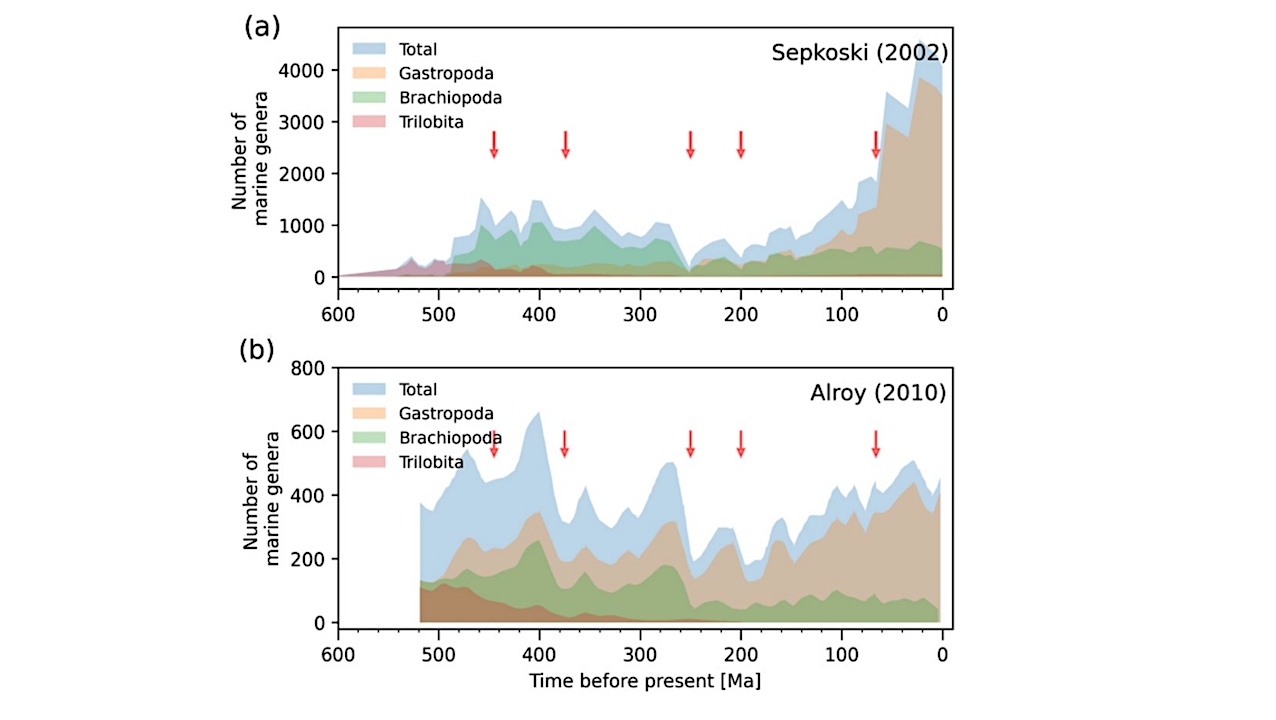Variations In Climate Habitability Parameters And Their Effect On Earth’s Biosphere During The Phanerozoic Eon

Essential insights on the characterization and quality of a detectable biosphere are gained by analyzing the effects of its environmental parameters. We compiled environmental and biological properties of the Phanerozoic Eon from various published data sets and conducted a correlation analysis to assess variations in parameters relevant to the habitability of Earth’s biosphere.
We showed that environmental parameters such as oxygen, global average surface temperatures, runoff rates and carbon dioxide are interrelated and play a key role in the changes of biomass and biodiversity. We showed that there were several periods with a highly thriving biosphere, with one even surpassing present day biodiversity and biomass. Those periods were characterized by increased oxygen levels and global runoff rates, as well as moderate global average surface temperatures, as long as no large or rapid positive and/or negative temperature excursions occurred.
High oxygen contents are diagnostic of biomass production by continental plant life. We find that exceptionally high oxygen levels can at least in one instance compensate for decreased relative humidities, providing an even more habitable environment compared to today. Beyond Earth, these results will help us to understand how environmental parameters affect biospheres on extrasolar planets and guide us in our search for extraterrestrial life.
Iva Vilović, Dirk Schulze-Makuch, René Heller
Subjects: Earth and Planetary Astrophysics (astro-ph.EP); Atmospheric and Oceanic Physics (physics.ao-ph)
Cite as: arXiv:2308.08470 [astro-ph.EP] (or arXiv:2308.08470v1 [astro-ph.EP] for this version)
Journal reference: Sci Rep 13, 12663 (2023)
Related DOI:
https://doi.org/10.1038/s41598-023-39716-z
Focus to learn more
Submission history
From: Iva Vilovic
[v1] Wed, 16 Aug 2023 16:20:10 UTC (2,962 KB)
https://arxiv.org/abs/2308.08470
Astrobiology








